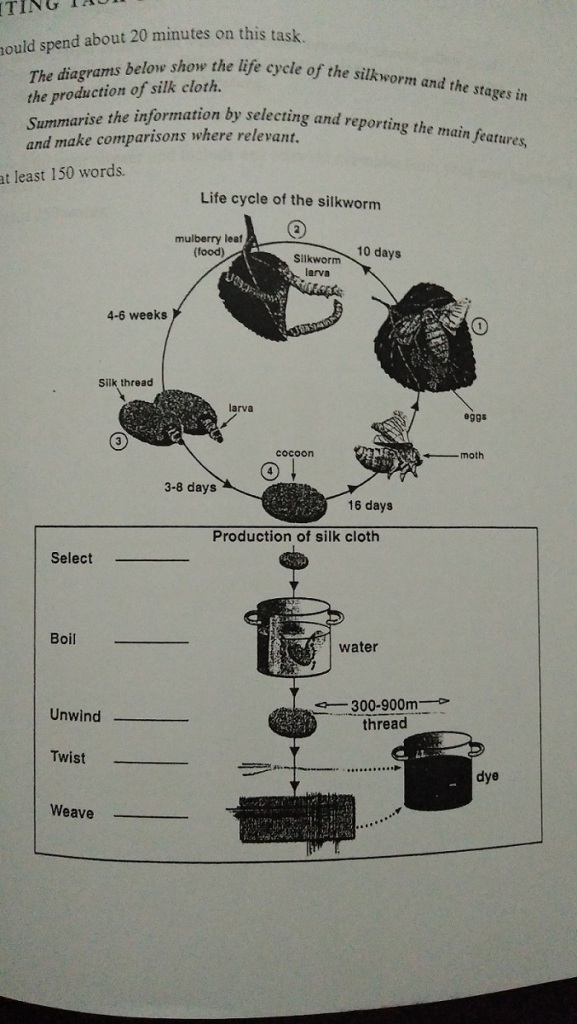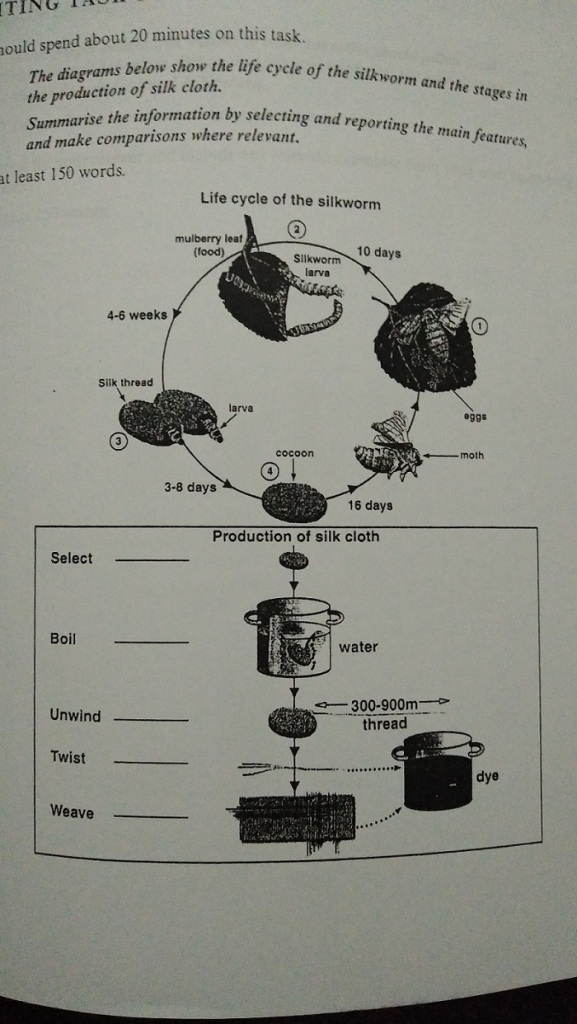These diagrams illustrate the silkworm's life cycle and the process of silk-cloth's production.
The life cycle of the silkworm starts while the adult silkworm produces eggs. After ten days later, the egg transforms to be a larva. The larva eats mulberry leaf as their food. On the next 4 - 6 weeks, the larva produces silk thread, then changes to be a cocoon after passing 3 - 8 days. It will be a moth after 16 days passing the cocoon age and be able to produce the egg. This perfect metamorphosis needs total time about one and a half month from the egg to be the moth.
Moving on the process of silk cloth, firstly, it is named 'selection stage'. The best silk is selected and to be 'boiled' in the water. After that, the silk is 'unwinded' for a while. It makes the silk has 300 - 900 metres thread. The next stage is called 'twist'. The silk is twisted, then it is dyed. The last, the silk is ready to be weaved.
The life cycle of the silkworm starts while the adult silkworm produces eggs. After ten days later, the egg transforms to be a larva. The larva eats mulberry leaf as their food. On the next 4 - 6 weeks, the larva produces silk thread, then changes to be a cocoon after passing 3 - 8 days. It will be a moth after 16 days passing the cocoon age and be able to produce the egg. This perfect metamorphosis needs total time about one and a half month from the egg to be the moth.
Moving on the process of silk cloth, firstly, it is named 'selection stage'. The best silk is selected and to be 'boiled' in the water. After that, the silk is 'unwinded' for a while. It makes the silk has 300 - 900 metres thread. The next stage is called 'twist'. The silk is twisted, then it is dyed. The last, the silk is ready to be weaved.

IMG20160827182037.jp.jpg
IMG20160827182037.jp.jpg
